Here’s a step-by-step guide on how Holly Neill created her own Mokomoko Manor, a haven where multiple skink buddies now live their best lives in her backyard on the Kapiti Coast.
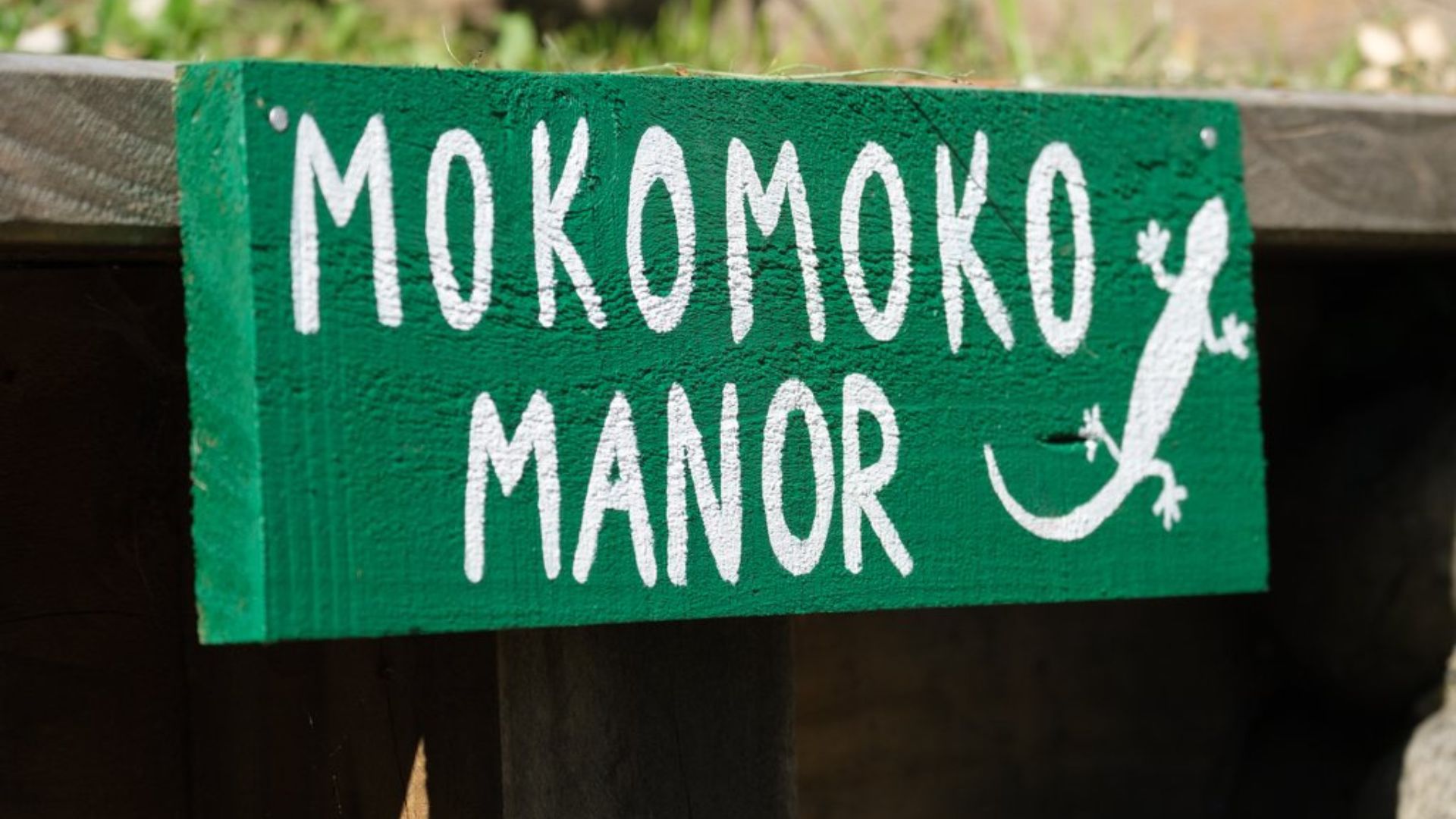
To start, all you need is a sunny, undisturbed part of your garden and a few specific items to kick things off. A crucial component of a successful lizard garden is also patience.
I’m very proud to say that after about 18 months of slowly but surely adding to my little lizard garden, I’ve successfully attracted lizard residents who seem to have moved in permanently.
The ‘infrastructure’
The key is to think like a skink. How would they move through this habitat? Are hiding spots accessible? Is there a safe spot to bask in the sun? Can they hide quickly if needed? Thinking like a skink (skinking?) will help you become the ultimate lizard lounge architect.
The key components of a good lizard garden include:
- piles of rocks, logs, branches, twigs
- small shrubs, grasses and ground covers
- divaricating shrubs like mingimingi are excellent
- a warm spot that gets a lot of sun each day
- lots of hiding places, nooks and crannies
- native plants that provide berries and/or nectar
- a water source
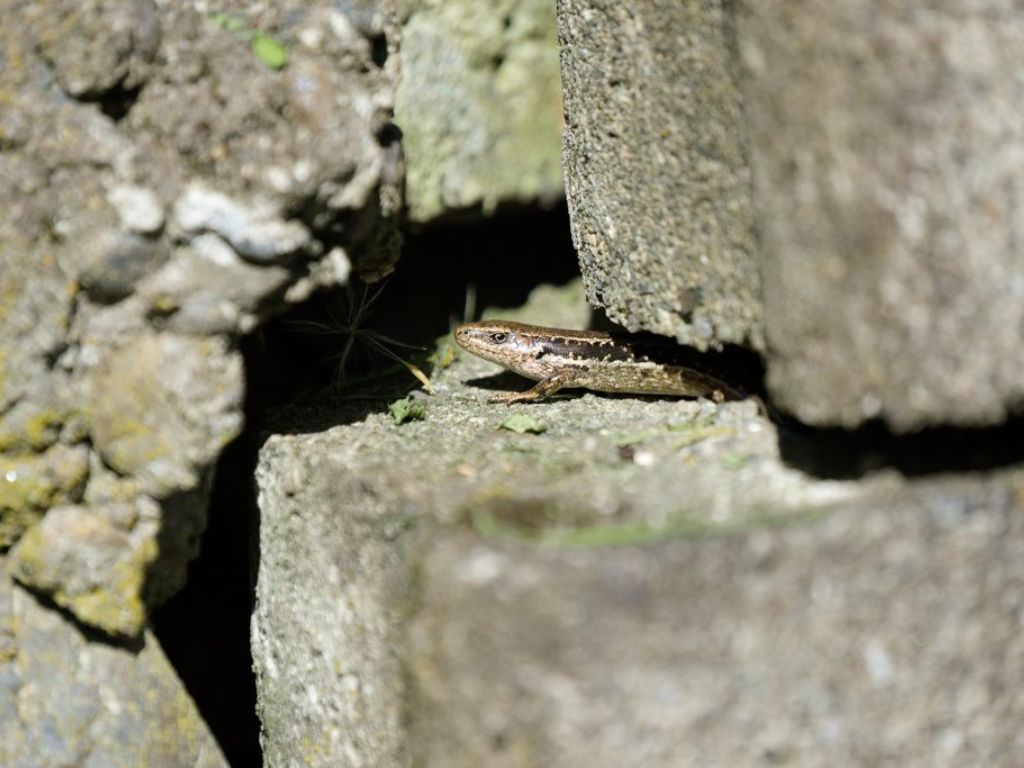
The concrete wall – a starting point
On one of our boundaries which is north-facing, there’s a large, solid wall/fence made out of triangular concrete blocks.
These concrete blocks were already pretty attractive to mokomoko as there are plenty of nooks and crannies, and the wall gets a lot of sun and retains its warmth.
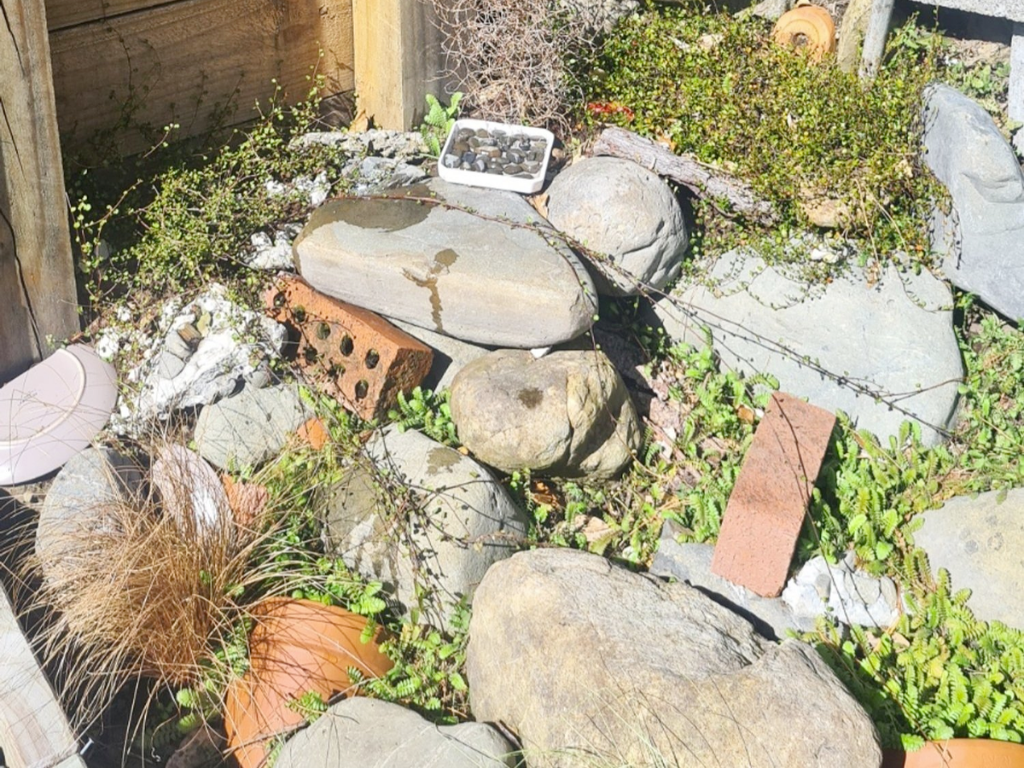
Big rocks
I picked the sunniest corner of the concrete wall, as this would be the best spot for lizards to consider taking up residence. I stacked up a bunch of large rocks we collected from around the garden. I took great care in stacking these so that there were gaps in between each one, with enough room for a lizard to fit through.
Bricks
Our garden also had a bunch of old bricks throughout it. These bricks had eight holes in them, making perfect little hidey holes for lizards. I placed several of these throughout the area. I wanted to ensure that lizards could use these holes in the bricks as hiding spots and escape routes if needed.
Bark and mulch
I found some big pieces of bark lying around and added those into gaps, essentially creating a little wooden roof over gaps in the big rocks to enable lizards to move around under cover. The bark also encourages insects, which are the primary food source for lizards. Covering most of the soil is a decent layer of mulch to help attract insects and suppress weeds, as I want to keep my weeding of the area to a minimum to prevent disturbing the lizards.
Broken terracotta pots
I deliberately broke a couple of terracotta pots and added these to the lizard garden. The broken, curved pieces of the pots make for excellent little tunnels and encourage insects to hide in the damp and moist soil underneath. I reckon they go pretty well with the ‘aesthetic’ of the lizard garden, too, as they match the bricks. It turns out that I got quite invested in my lizard garden’s overall ‘look’. I hope they brag about their snazzy abode to their other skink friends and then invite them to move in.
A water dish
A reliable water source makes things much easier for lizards to stick around. My solution was to fill a spare outdoor pot saucer with small stones, and I filled it with water each day. Their water source shouldn’t be too deep because can you imagine the horror of discovering a drowned skink?
Traps
Countless lizards fall victim to rats, mice, cats, and hedgehogs every day. A backyard trap is an excellent place to start. I’ve got several traps set up around my garden to help protect the wētā, skinks and native birds that call it home. You can get your traps from the Predator Free NZ online shop or Connovation. It’s also a good idea to keep your cat indoors, as endorsed by the SPCA.

The plants
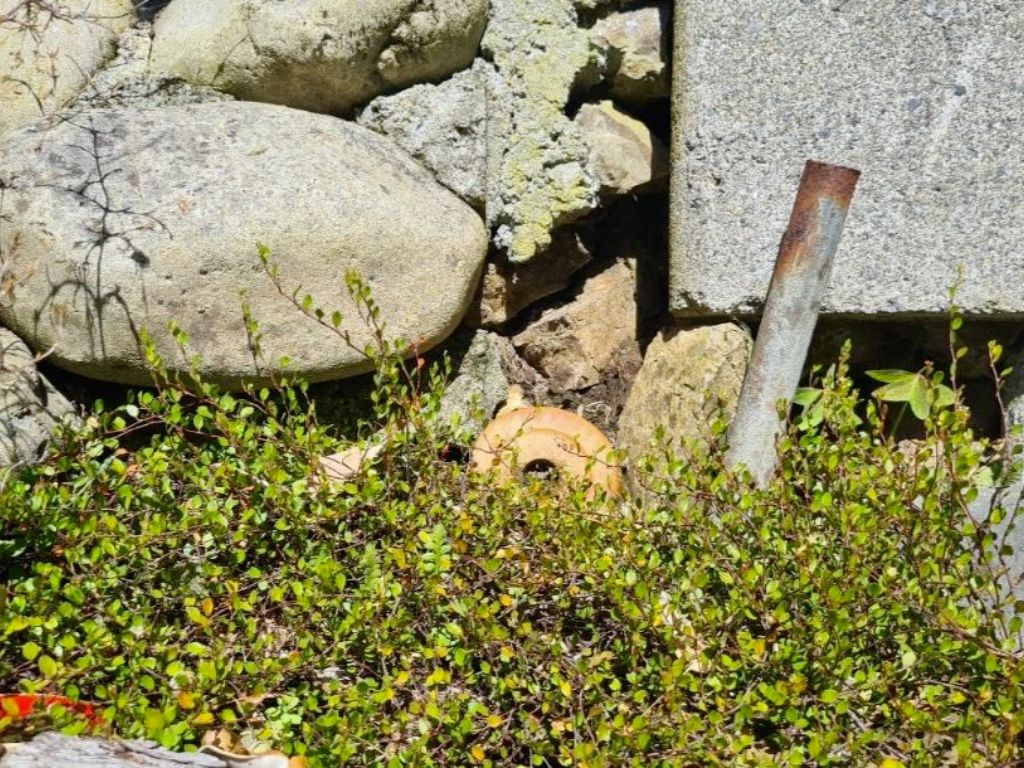
The next step to perfect Mokomoko Manor was the plants. I used this excellent Predator Free NZ Trust resource as a starting guide. So far, I have planted:
- Pōhuehue – Small creamy white flowers are produced prolifically in summer, followed by opaque white fruit, which geckos and birds love.
- Scrub pōhuehue, small-leaved pōhuehue – Flowers are creamy and are followed by black seeds held in a fleshy cup which geckos and birds love.
- Shore cotula – Attractive to bees and insects.
- Mikimiki – Tiny flowers are followed by small, fleshy fruits with a single black seed in the middle.
I intend to expand my planting by adding rengarenga, shrubby tororaro/mingimingi, and carex grasses.
Mess is magic! No need to garden
A major perk of a lizard garden is its low maintenance. It has no need to be ‘manicured’ or look pretty. Letting your lizard garden be natural and get a bit wild is perfect. Let nature do its thing – it tends to know best.
Now, the lizards!
My new backyard pals are native northern grass skinks. Don’t get touchy-feely when they do show up – remember, it’s against the law to handle lizards without a permit, but more than that, it’s quite stressful for lizards to be handled and can cause them to lose their tail. It’s also illegal to take lizards from an area and relocate them to your garden. Don’t do this.
The Department of Conservation says, “Northern grass skinks are avid baskers. They seek the sun and prefer sunny habitats. They often minimise the risk of predation by exposing only small parts of their body at one time, remaining well hidden.
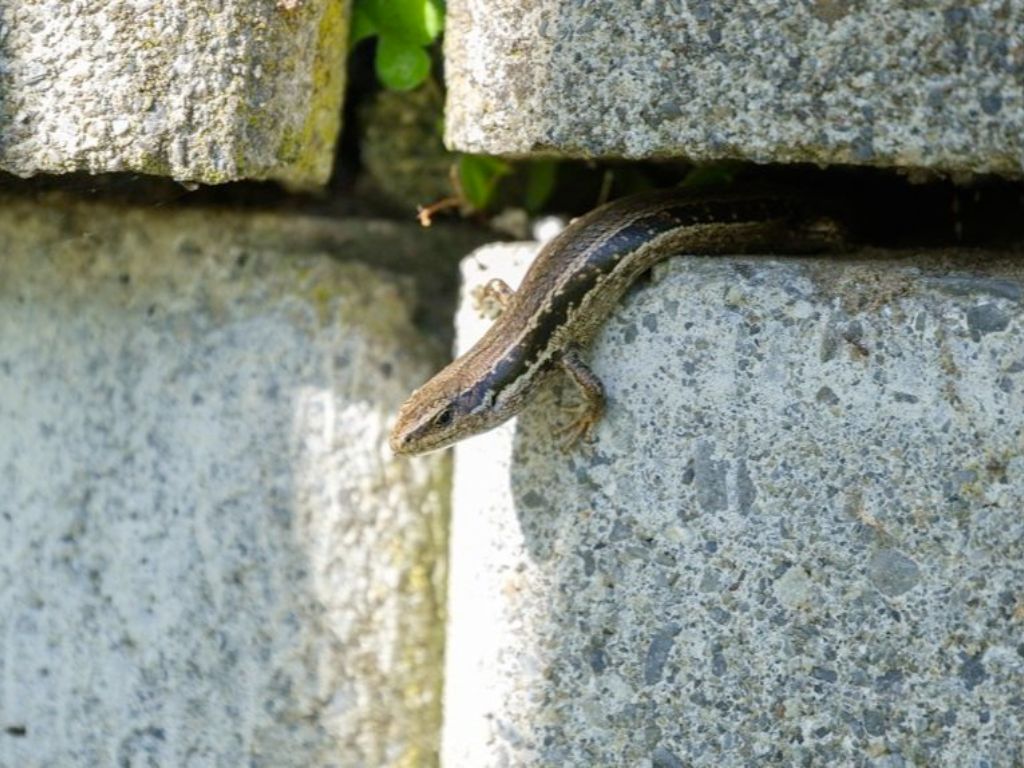
Here’s some best practice guidance from DOC on how to responsibly care for lizards in your garden.
About Holly
When Holly and her partner moved into their home on the Kapiti Coast in late 2020, they set about turning their overgrown, weed-infested gardens into native habitats for NZ’s native and endemic wildlife. Despite a lot of searching, she never spotted a single lizard when the garden was full of agapanthus. They wanted to ensure their gardens provided food and shelter for native invertebrates, reptiles and birds.

